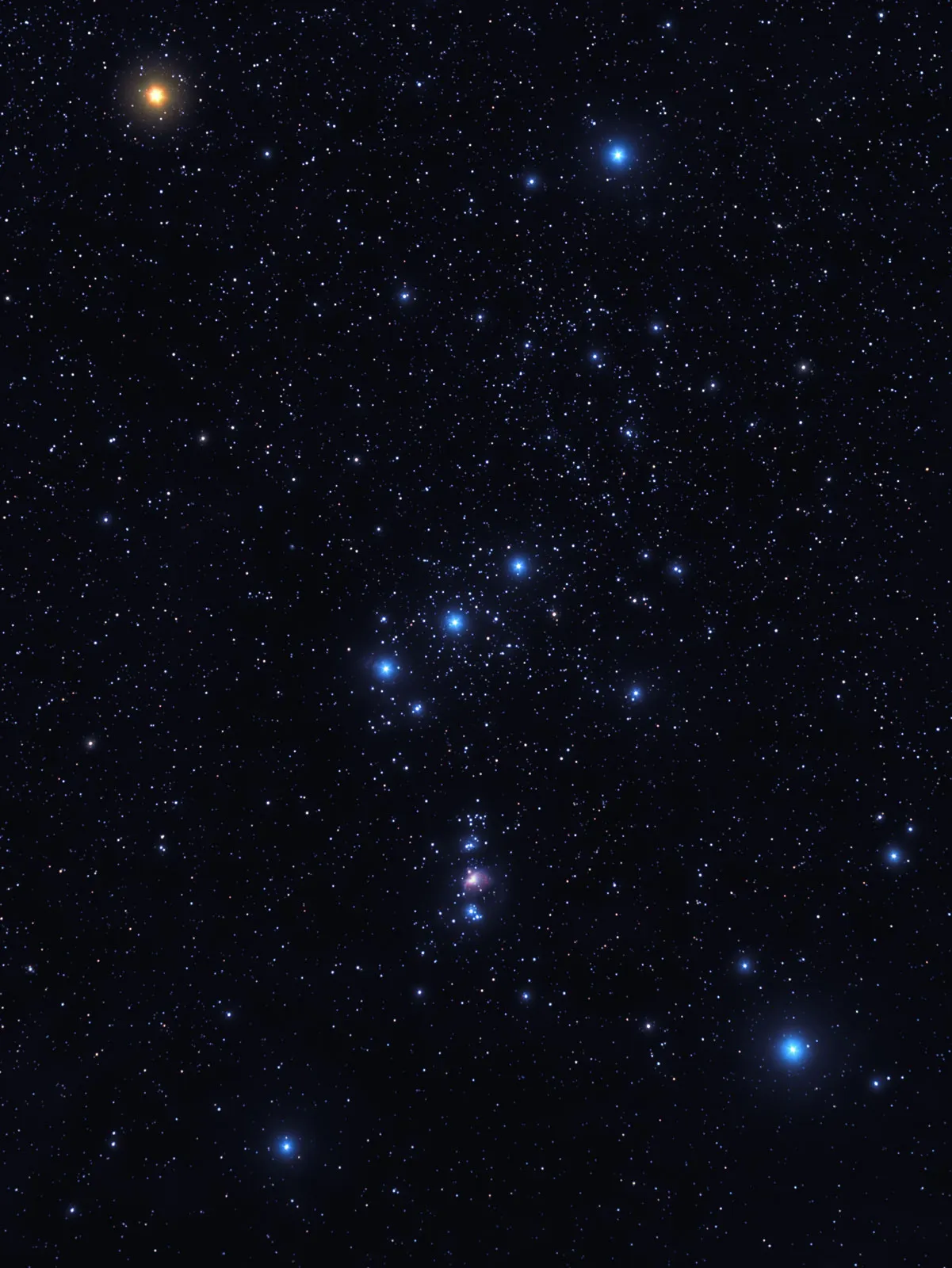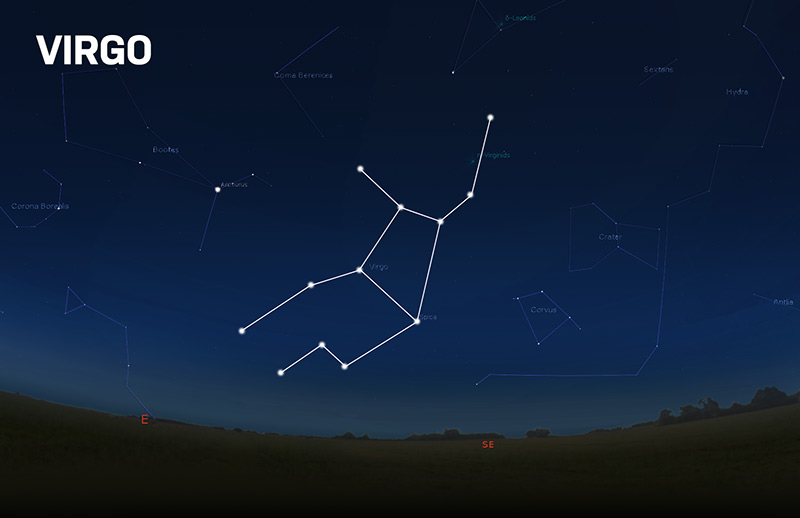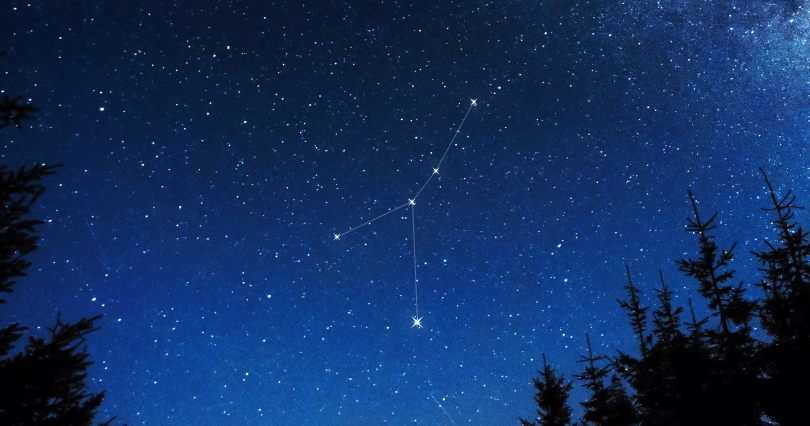THE SOUTHWORTH PLANETARIUM
70 Falmouth Street Portland, Maine 04103
(207) 780-4249 usm.maine.edu/planet
43.6667° N 70.2667° W
Altitude: 10 feet below sea level
Founded January 1970
2021-2022: CXVII
"Don't meddle in the affairs of dragons..for you are crunchy and go well with ketchup." -Seen on a bumper sticker
THE DAILY ASTRONOMER
Tuesday, May 3, 2022
May 2022 Night Sky Calendar: The Stars
ORION EXITS STAGE WEST

Let's pretend just for a moment that you were reading the DA on your phone in May, 1822. (Yes, that would have been quite a trick.) You would have read that Orion, the mighty, boastful, lusty, blood-thirsty, and quasi-psychotic hunter was due to dissolve into the evening dusk by mid-month. However, Orion admirers could draw solace from the assurance that this famous constellation would return to the early morning August sky.
Now, let's also pretend that you were reading the DA in May, 2222 on the projection screen implanted in your retina at birth. You would learn that Orion, the sensitive, Earth-appreciating, animal-cherishing, blissfully celibate vegan was due to set by mid month, but would certainly return to the eastern pre-dawn sky by early August.
See the pattern?
Now, in May 2022, we'll watch Orion low along the western horizon early this month. However, by mid-May, it will vanish into the dusk and shall emerge into the morning sky by early August. This time of year, Orion sets for his late spring/early summer hiatus. While beachgoers frolick freely along the sun-scorched shores on a June afternoon, Orion will loom high in the sky, concealed by the unbounded cerulean blue. He remains present, but hidden.
This pattern will continue for many centuries. However, Earth's precessional motion, which shifts star positions by about one degree every 73 years, will eventually disrupt this pattern. Orion will eventually set and rise later in the year. However, for the rest of our lives and those of the next few generations of descendants, we can expect Orion to depart in the May evening and rise in the August morning. A comforting constant in a world of ceaseless change.
VIRGO VISITS HER MOTHER

Let's quickly review the mythology. Apologies to meticulously-minded mythologists who abore abbreviation.
Persephone was the beguilingly prepossessing daughter of Demeter, goddess of the Harvest. One lovely afternoon, while Persephone was picking flowers in a meadow, a wide fissure opened next to her. Hades rose out of this chasm like a Saturn V rocket on a chariot drawn by fierce black steads. He swept Persephone into the chariot and rapidly descended back to the murky depth of the underworld. Well, Persephone's abduction so distressed her mother that the world grew cold and barren. Crops failed, all vegetation withered and the mortals began to starve. Zeus, desperately afraid that he might lose all of his unwashed worshippers,intervened and brokered a compromise so that Persephone would spend part of the year with Hades and the other part of the year with her mother. When she is down in the depths with her dreadful husband, Demeter becomes so distraught that the world grows cold and nothing grows. However, when Persephone, also known as Virgo, returns to the upper world, Demeter's mood improves and the world becomes lush and verdant once again. In this way did the ancient Hellenists explain the seasonal transitions.
Now that we're in May, Virgo begins the night in the eastern sky. Virgo is the longest of the Zodiac constellations. The Zodiac refers to the thirteen constellations through which the Sun appears to travel throughout the year. The Sun passes through Virgo from mid September to the end of October. Virgo's descent into the late summer dusk marks Persephone's imminent return to the world of the dead over which her husband Hades presides. Consequently, the land grows cold and hostile. The less said about that the better.
THAT'S A CRAB?!


Retelling the Cancer the Crab story concisely is wonderfully easy. You see, when Heracles was battling the Hydra, the many headed water snake who sprouted two heads whenever one head was severed, Hera, who harbored an unhinged hatred for Heracles, cast Cancer the Crab down to Earth to assist in the fight. Well, Cancer wasn't much help. It scurried up to Heracles, who promptly crushed it under his heel. Instead of a formidable antagonist, Cancer the Crab proved to be little more than faint annoyance. Despite its less than stellar performance, Cancer was not only hoisted into the sky, but was placed along the zodiac. It marks the Sun's position during early August. Cancer begins the night almost due south and remains in the western sky until just after midnight.
Formed by faint stars arranged in the shape of an inverted "y," Cancer doesn't look much like a crab. In fact, the only prominent feature is the Beehive Star Cluster, or Praesepe, which marks its center. Quite often, this star cluster will be the only visible part of this constellation.
Tomorrow: part II of the May Night Sky Calendar.
To subscribe or unsubscribe from the Daily Astronomer: